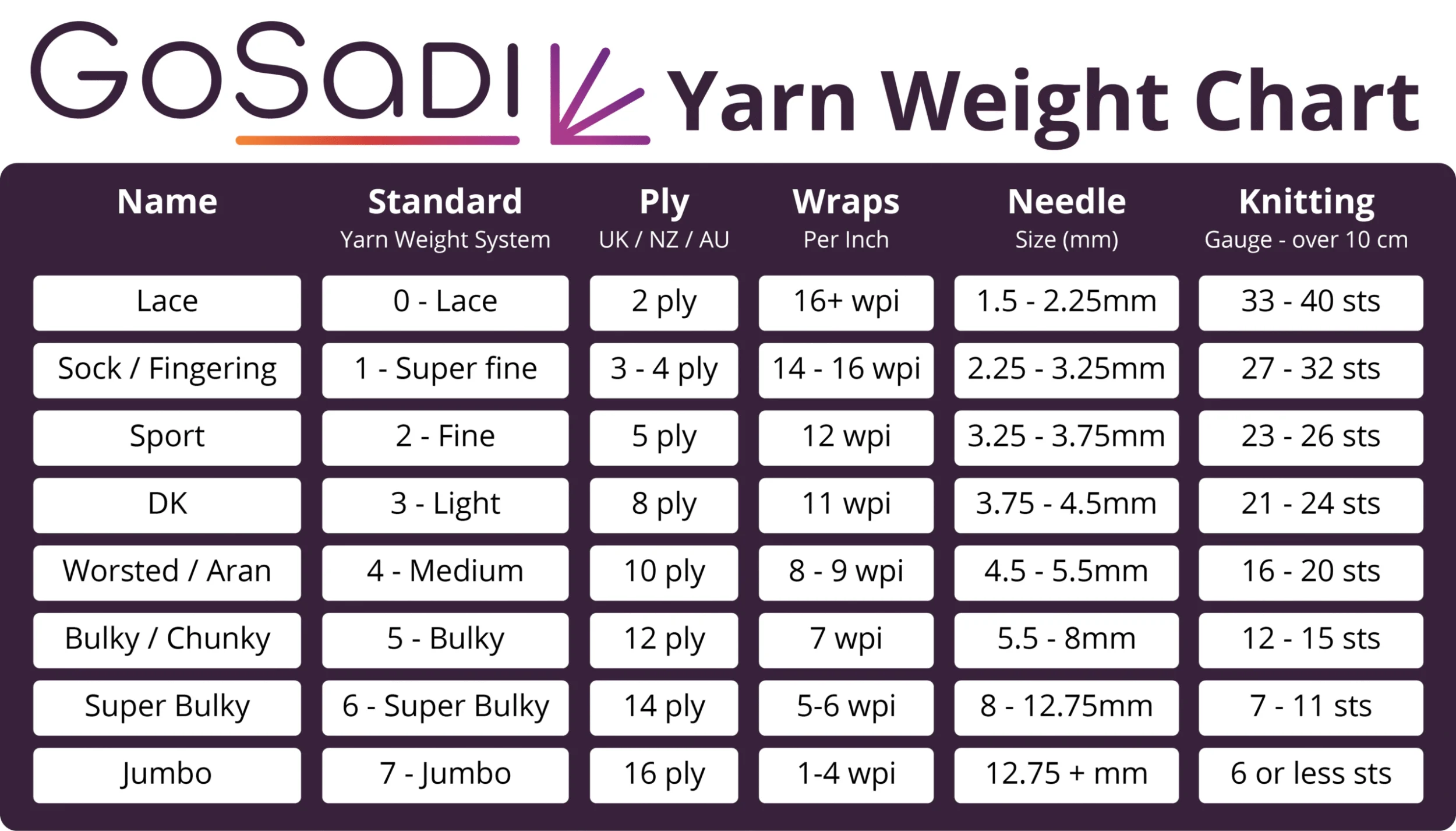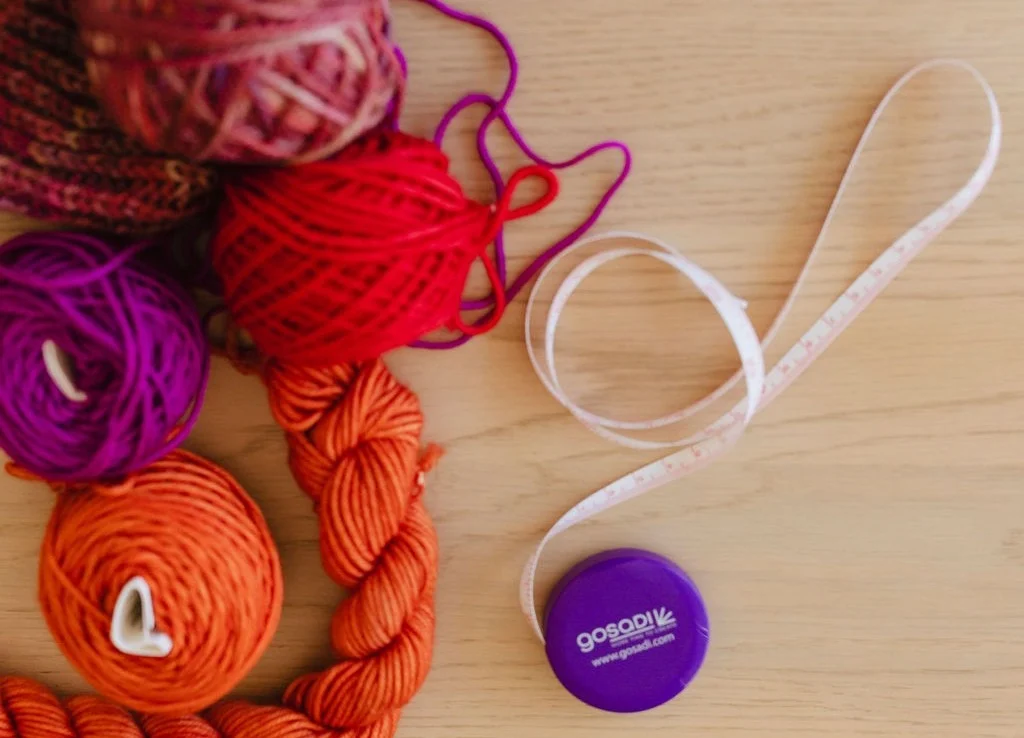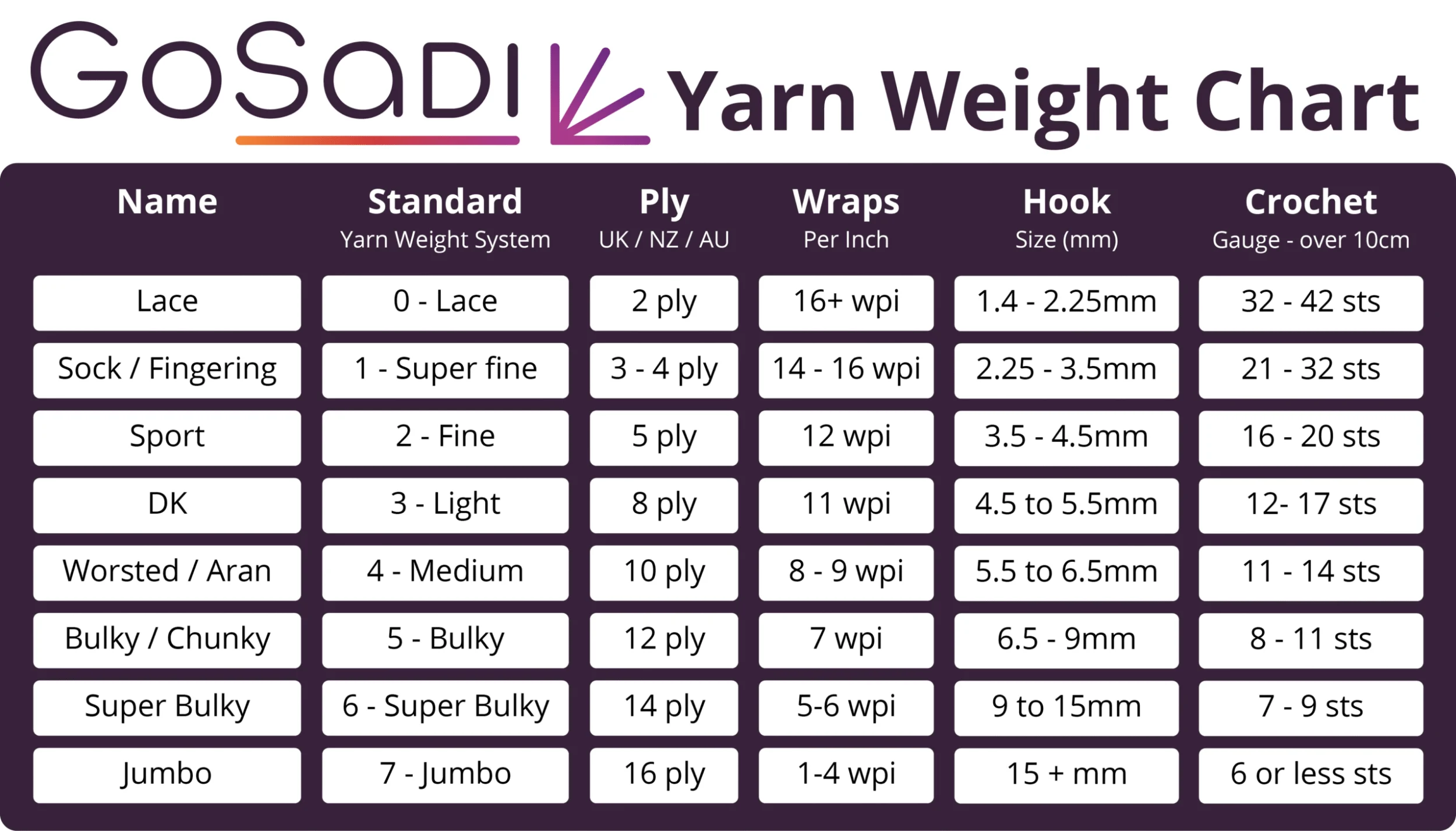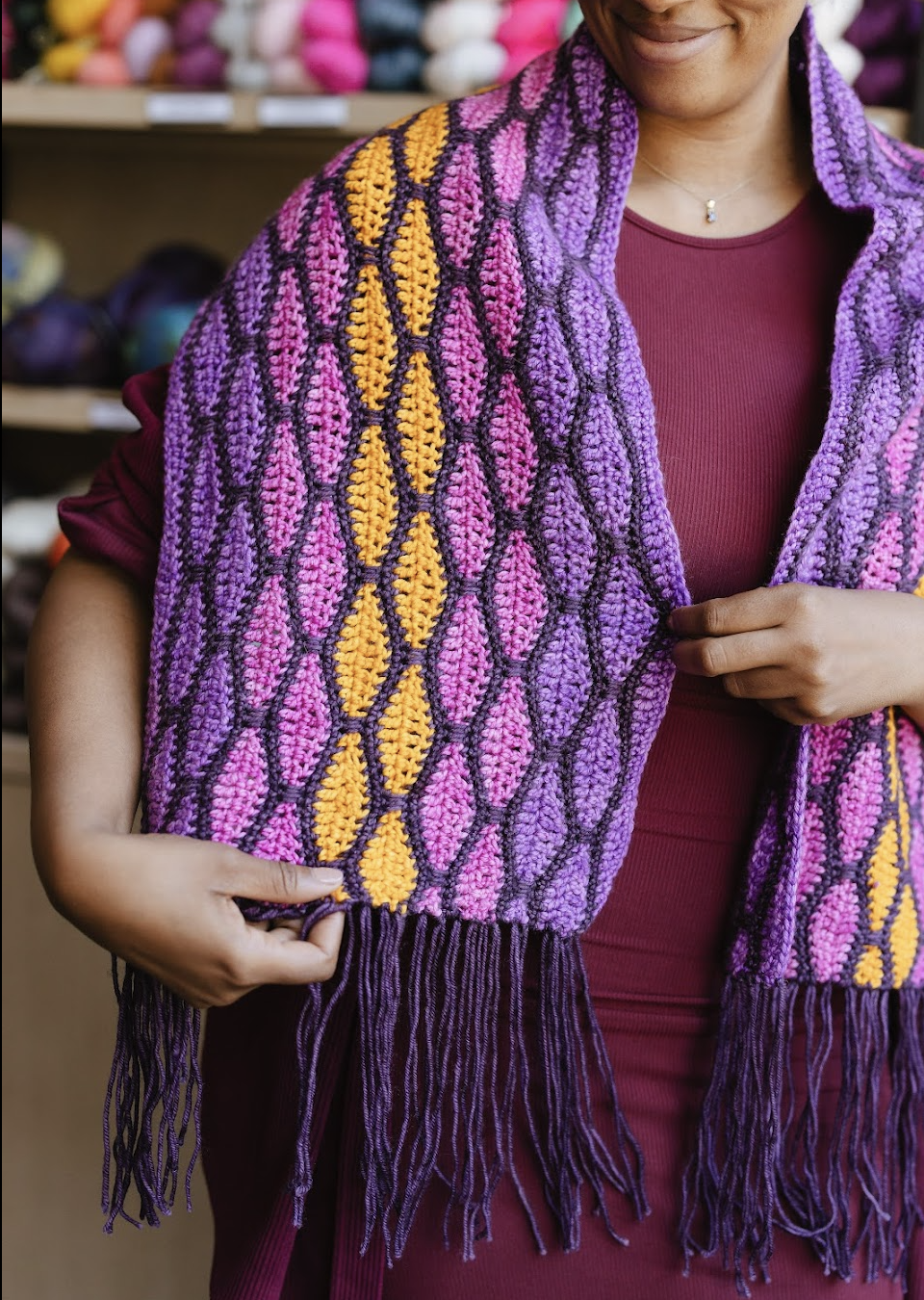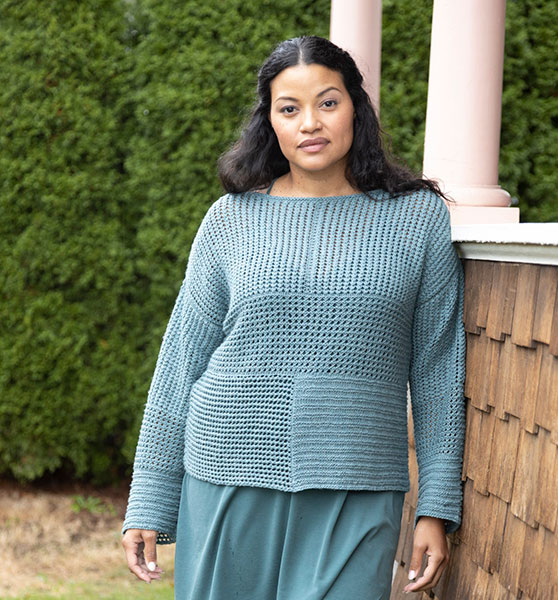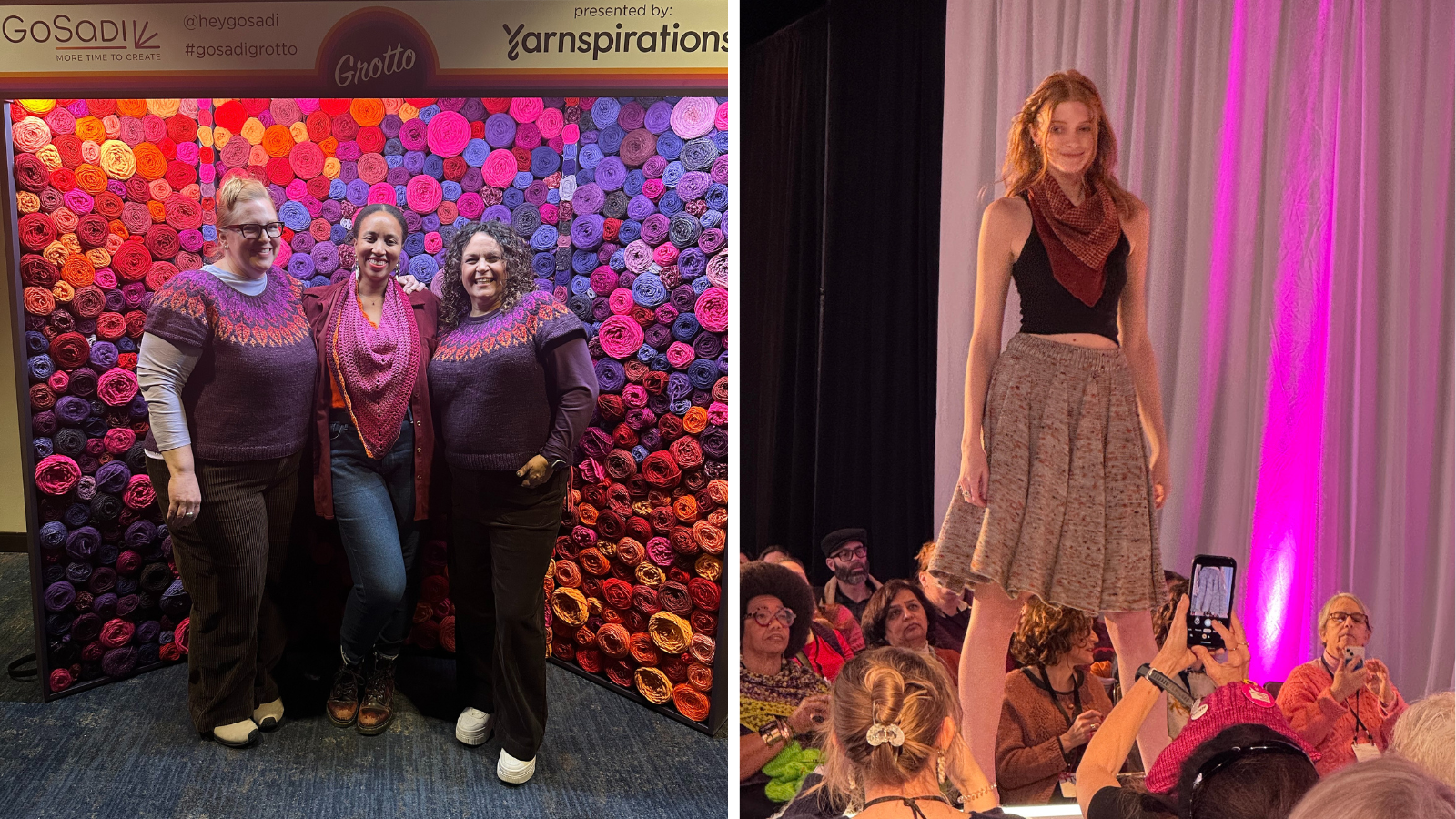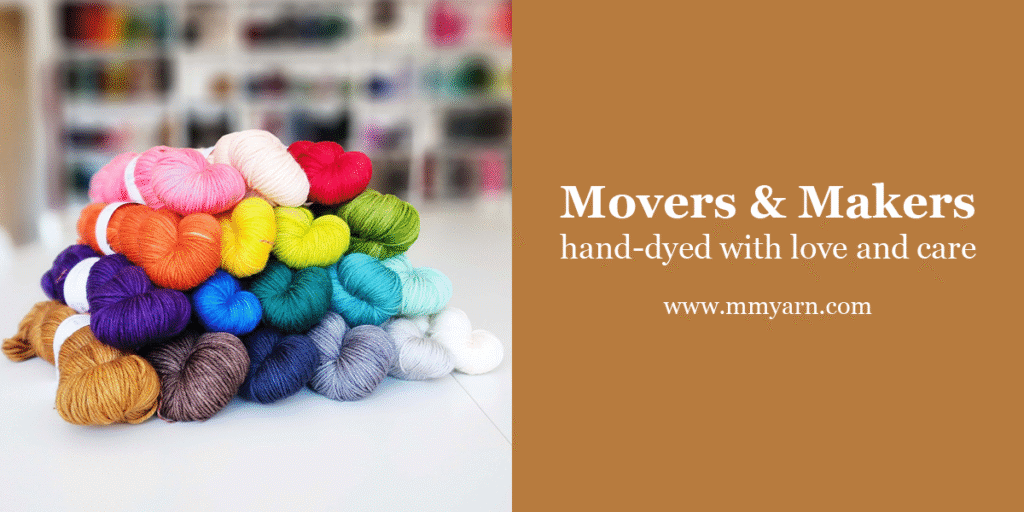One quick internet search and you will quickly see that there is a variety of information about yarn and yarn weights out there and not all of it aligns. Here at gosadi, we want to provide you with a quick reference for how we factor and talk about yarn.
A yarn weights chart is a guide to yarn weights for knitters, crocheters, and anyone else who uses yarn for crafting. We’ve put together a simple yet comprehensive guide to help you put a yarn weight chart to good use, using our very own right here.
our gosadi yarn weight chart
This looks like a lot of information in a lot of different columns, but it is all very useful. Much of it is often found on yarn labels, so it will make your life easier and your projects more successful if you understand it. Let’s break it down!
The first four columns are all different ways to refer to yarn weights. Let’s start by getting familiar with all of these different yarn weight categories. Each one has a name, a standard based on the Craft Yarn Council Yarn Weight System, a ply number, and a wraps per inch number. We’re going to start with the first two columns and get more into ply and wraps per inch a little further down.
yarn weights
Yarn weight does not refer to the actual weight of the ball or skein of yarn but rather to the thickness of the strands.
Lace is the lightest weight of yarn. It is designated as 0-Lace by the CYC. It produces a very fine-gauge fabric and is often used for delicate projects. Lace is often knit on larger needles and hooks to create open lacey patterns.
Super fine also known as fingering weight or sock yarn. It is designated as 1-Super fine by the CYC. It is a bit heavier than lace and creates a more substantial fabric. Super fine is commonly used for socks, hence the name, but is also still light enough to be used for lace and heavy enough to be used for nearly anything else.
Fine is often called sport weight. It is designated as 2-Fine by the CYC. Slightly heavier than fingering, fine is a great weight for nearly all projects, especially sweaters, and is a good weight for colorwork.
Light is DK (double knitting). It is designated as 3-Light by the CYC. Light yarn is the heaviest in the lightweight yarn category and appreciated because it can work up so much more quickly but works well for any project you can make out of a lighter weight yarn.
Medium consists of worsted and aran. It is designated as 4-Medium by the CYC. No longer considered lightweight yarns, they are considered useful because they can really be used for just about anything, from clothing and accessories to decor. It’s right in the middle and the best of both worlds.
Bulky is also known as chunky. It is designated as 5-Bulky by the CYC. This heavy weight is approximately twice as thick as worsted weight yarn and works up quickly. It’s great for heavier garments, accessories and throws.
Super Bulky is very thick. It is designated as 6-Super bulky by the CYC. It’s perfect for the coziest accessories and typically uses fairly large needles and hooks.
Jumbo is the thickest yarn weight. It is designated as 7-Jumbo by the CYC. This super thick yarn is often used for arm-knitting, hand-crocheting, and other big stitch projects.
PLY
Ply refers to the number of strands that are twisted together to make the yarn. For example, when you reference the chart and see that a DK is an 8-ply yarn, that means that eight smaller strands are twisted together to make that single strand of DK weight.
Ply can be confusing because the number does not always determine the overall yarn weight. Generally speaking, the higher the ply, the thicker the yarn, but there are exceptions to this rule. Some yarns might use more thin strands to achieve the same weight and sometimes, heavy yarns have fewer but thicker plies. For this reason, don’t rely on the ply number alone to tell you what weight a yarn is. Using WPI is a bit more accurate.
WPI (wraps per inch)
WPI means “wraps per inch.” It is the most common way to measure a yarn strand’s diameter. You can use a ruler to see how many times the yarn can wrap around it until an inch is covered to see that yarn’s WPI. For example, if the yarn wraps around 7 times in an inch, its WPI is 7 and that would tell you that it is a bulky weight.
There are plenty of wraps per inch charts and tools out there, however, this method is still not error-proof because one person may wrap the strands around more tightly than someone else. While WPI can be a great guide and could possibly give you the right answer, we don’t recommend it over swatching the yarn yourself.
needle/hook sizes
As a general rule, larger needles and hooks are used for thicker yarns and smaller needles are used for thinner yarns, but this is not always the case and you should never assume. Even when the yarn suggests a needle or hook size, remember it is just that… a suggestion. Knitters and crocheters work at varying tensions, which refers to how tightly or loosely stitches are created. Only a gauge swatch is unique to you and will accurately represent how you and the yarn will work together. Let’s delve a little deeper into gauge to help you understand why swatching is so important.
gauge
Gauge refers to the number or stitches and number of rows over a certain measurement. Most commonly it is measured over 4 inches or 10 centimeters, and in a designated stitch pattern. Gauge is often referred to as tension and it is important for a variety of reasons, the most important being that if your project isn’t the recommended gauge, it won’t be the correct size. Not having the correct gauge could also result in a fabric that doesn’t drape well or have the density it needs.
Here is an example of how gauge varies across yarn weights. Suppose you are knitting or crocheting a coaster. With a super bulky yarn, you may only need 10 stitches to get to the width you want it to be. If you were to make the same coaster in a fingering weight, you would need closer to 28 stitches to achieve the same width. Note that in this basic scenario, you would use a larger needle or hook size for a heavier yarn and a smaller one for lighter yarn. The gauge recommendations in yarn weight charts and on yarn labels reflect this, but are a guide only. There are too many variables for this information to be exact.
Gauge also varies depending on who is making the stitches. While it may take you 28 stitches in a fingering weight to achieve the width of your coaster, someone else might actually need 32 stitches in the exact same yarn because they knit or crochet with a tighter tension than you do. This is why gauge matters.
swatch before crocheting or knitting
There are so many reasons to swatch! A swatch is the only way to accurately represent how you will work up a specific yarn. We’ve gone through yarn weights, plies and WPI, and while these can guide you to the weight of yarn, there are still so many other variables. Your gauge can change based on the needle or hook you use. You might be a particularly tight knitter or loose crocheter. Even if you know your yarn is a worsted weight, yarn thicknesses within that category can vary and produce a different gauge. There might also be a time where you want to use multiple brands of the same yarn weight in a project and swatching is a good way to confirm they will play well together.
Learn how to use a yarn weight chart to find the right substituted yarn for your project in Part Two of our yarn chart breakdown: Yarn Substitutions.
save these yarn weight charts for your next project!
our crochet yarn weight chart
our knitting yarn weight chart
